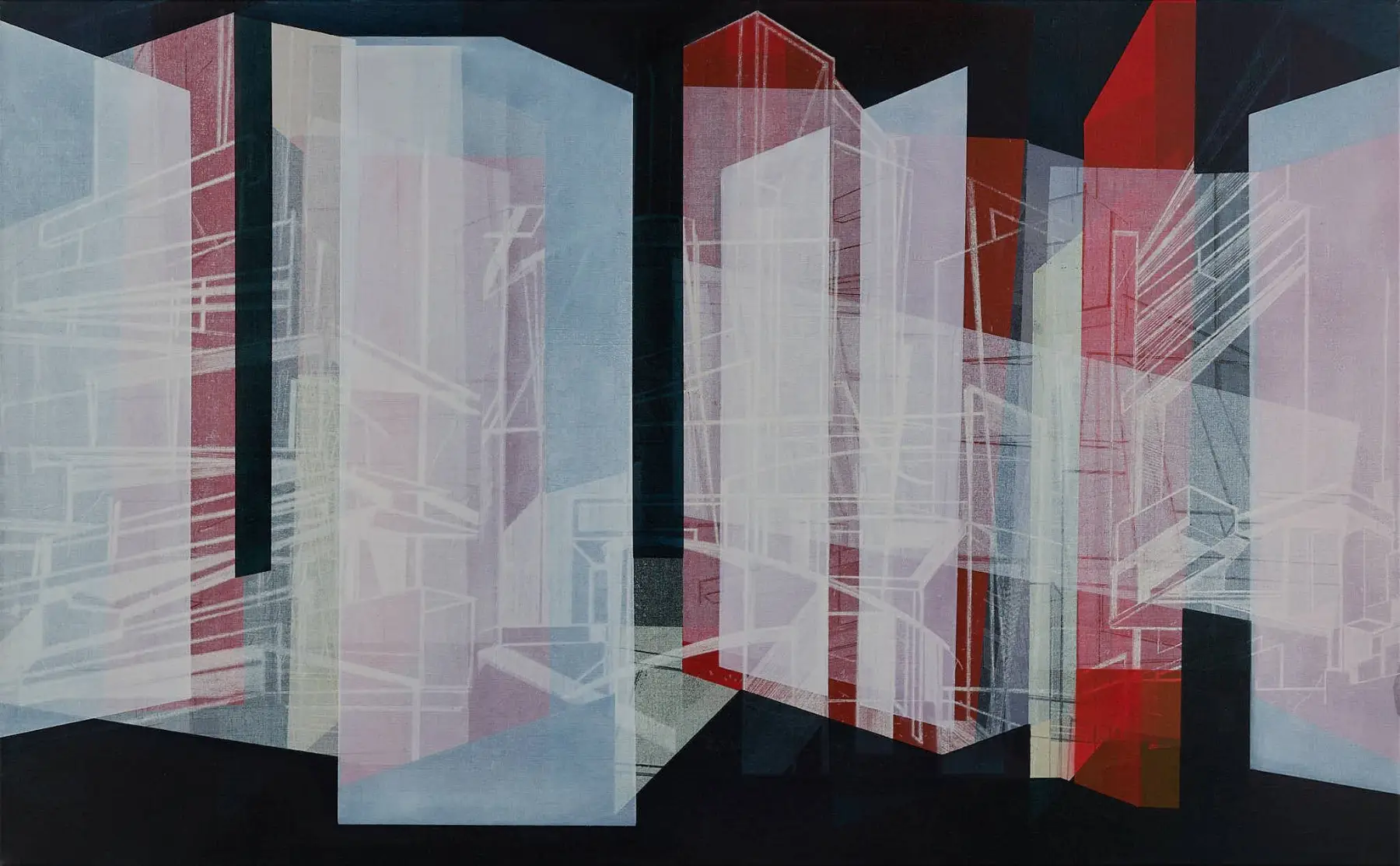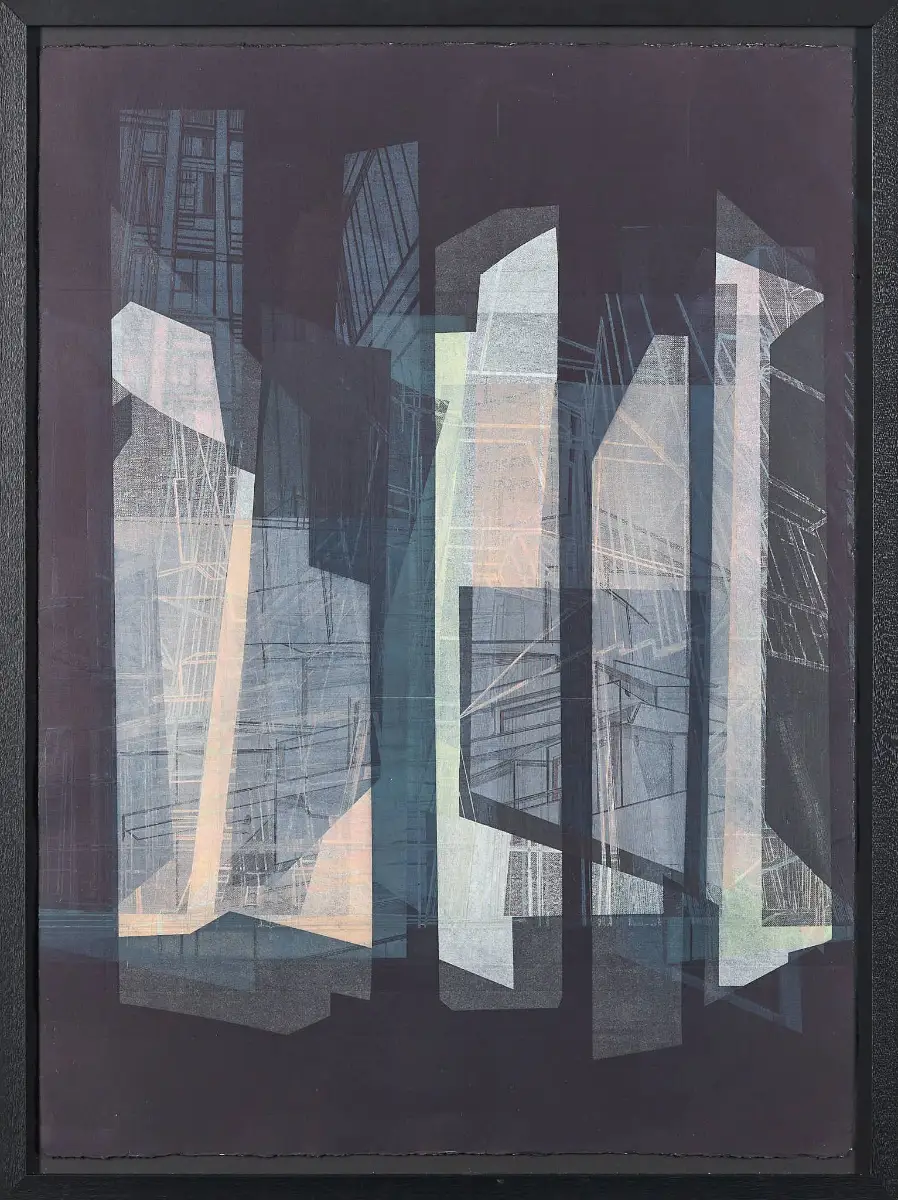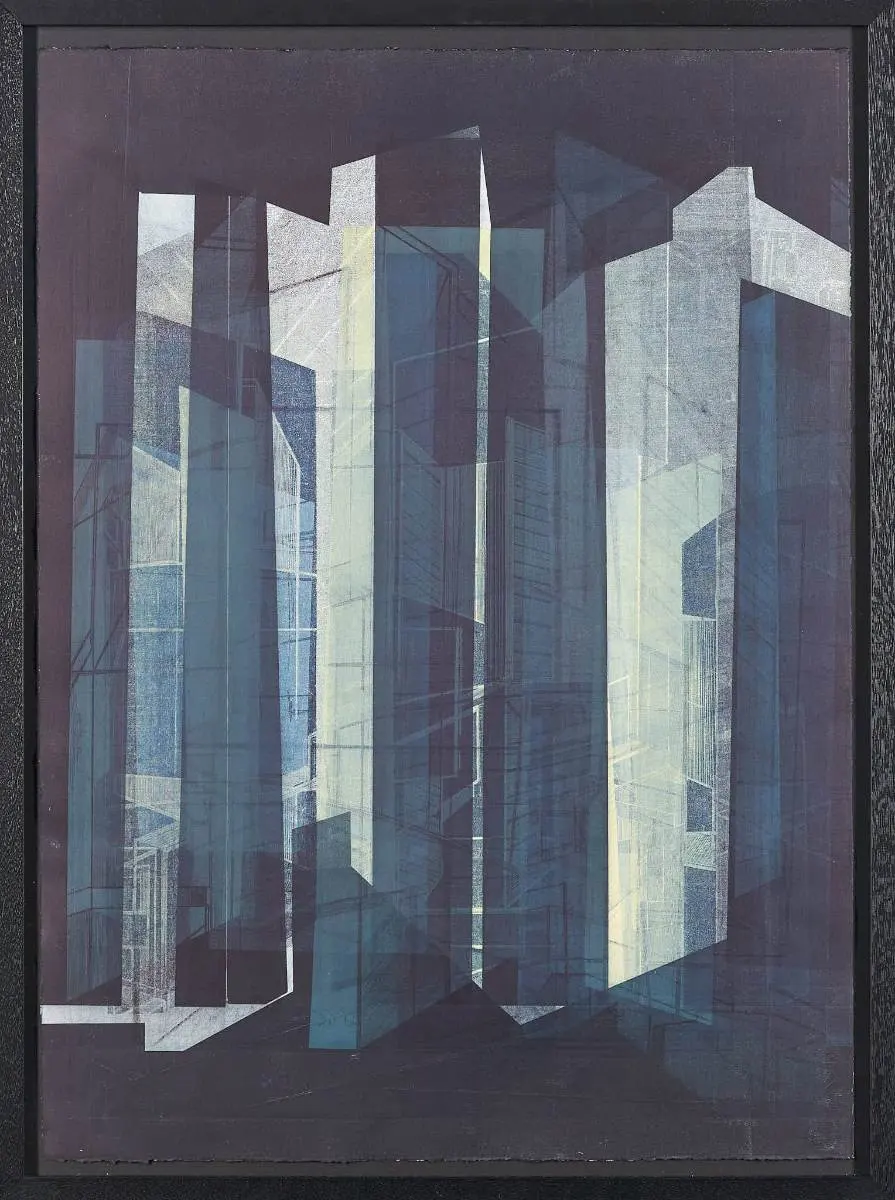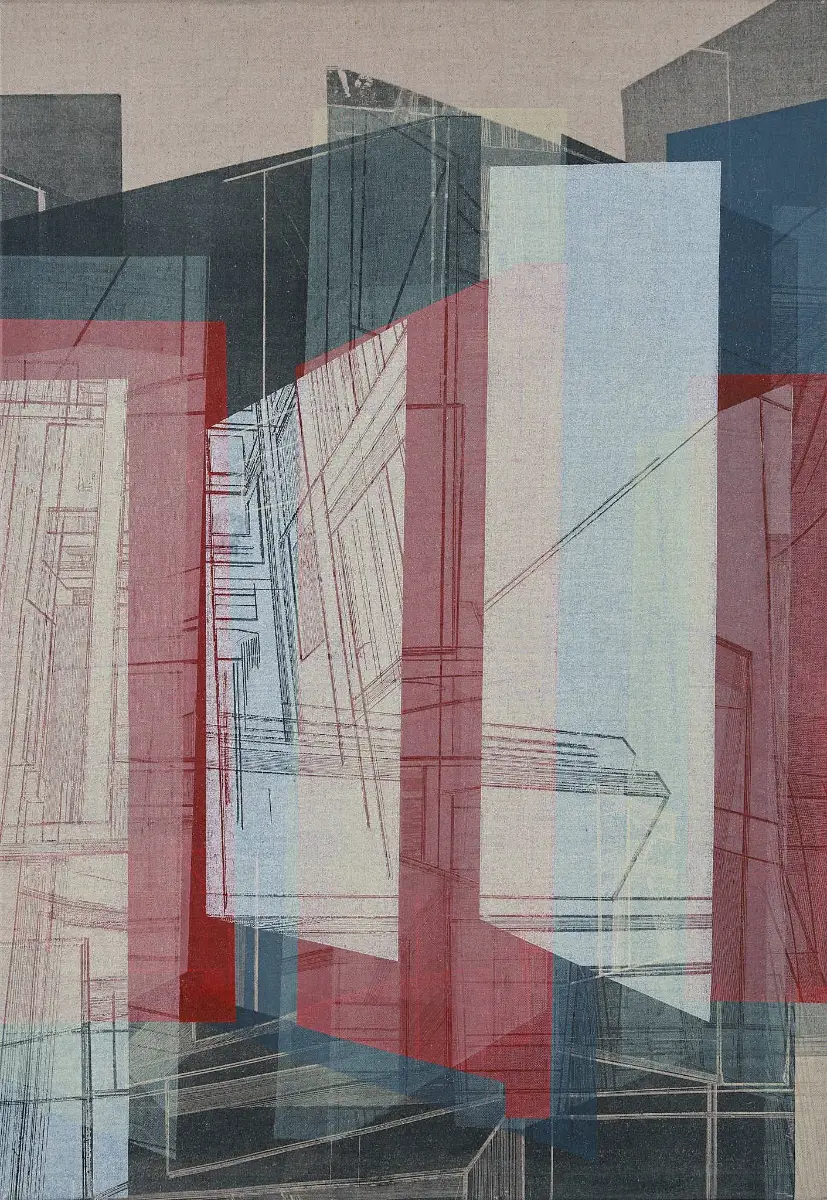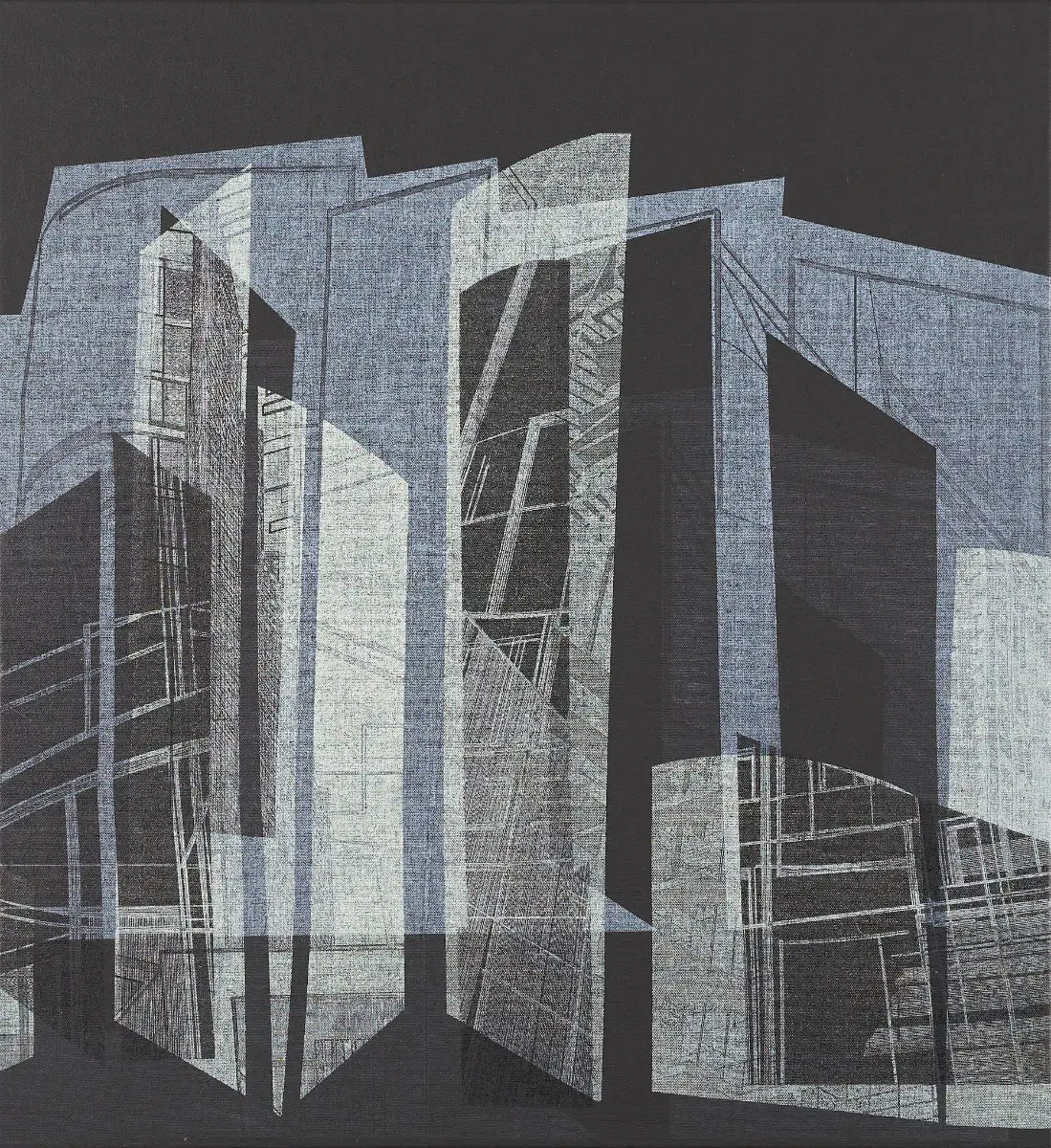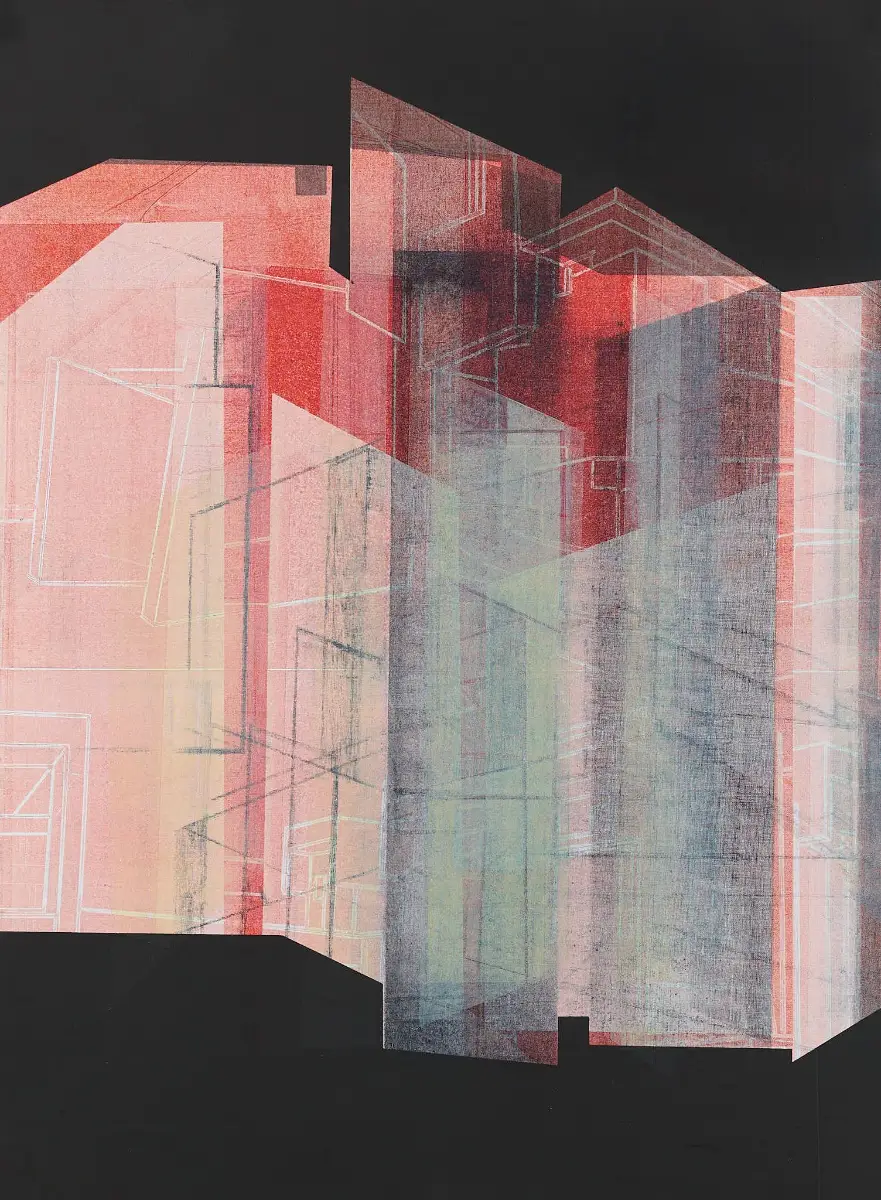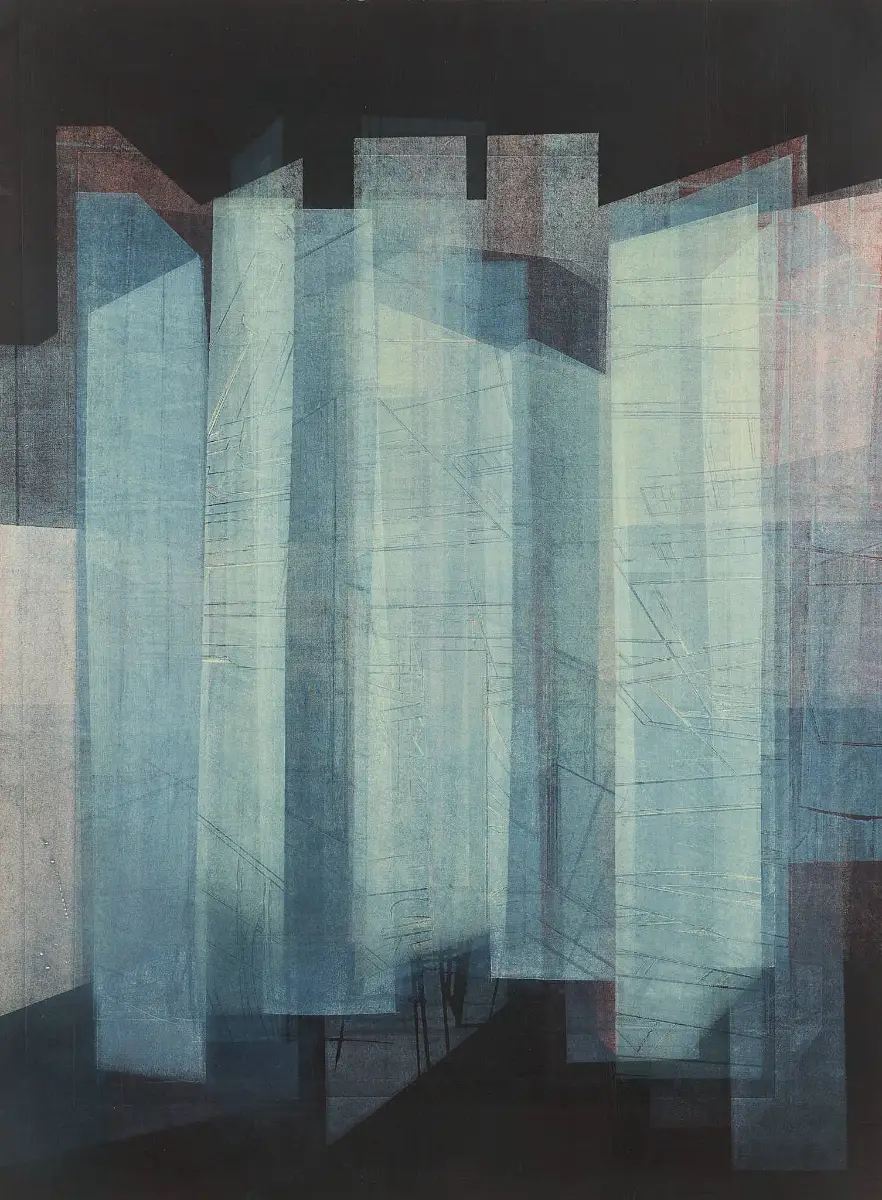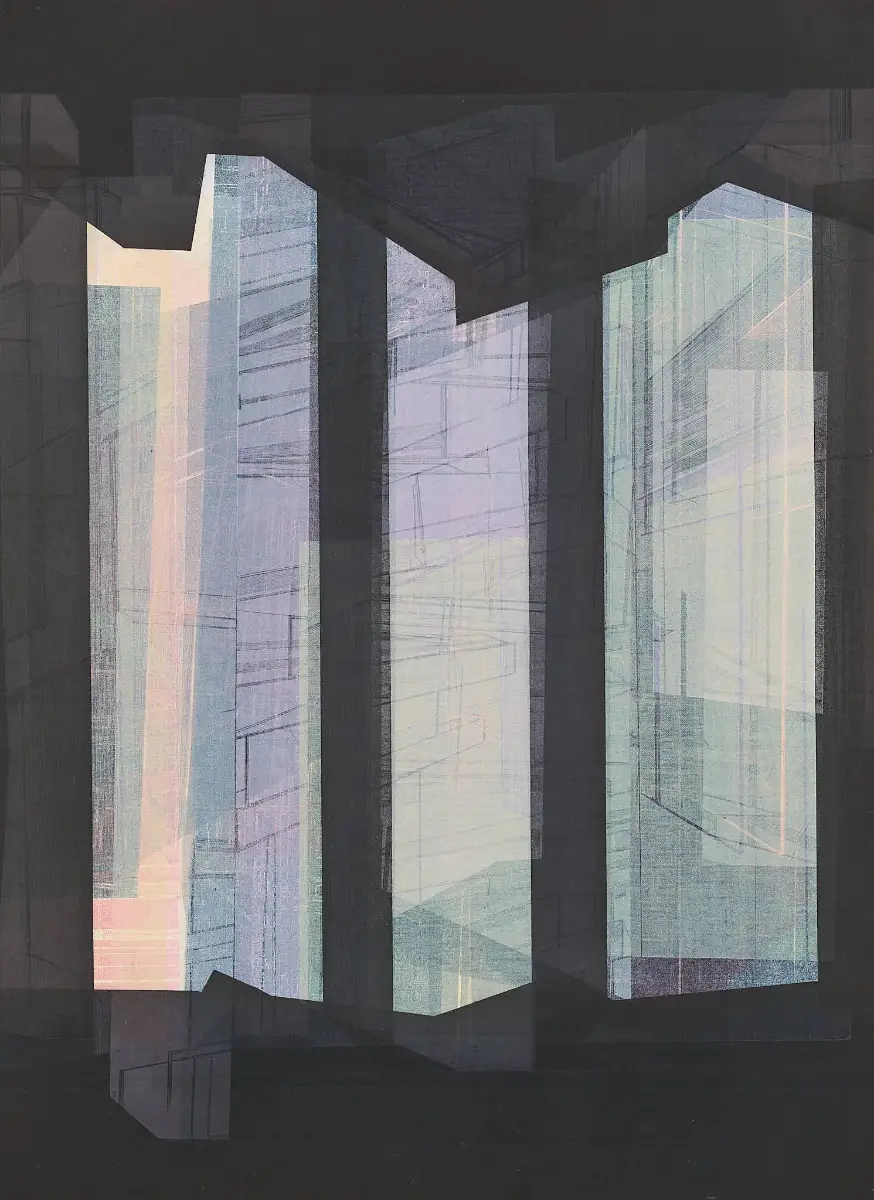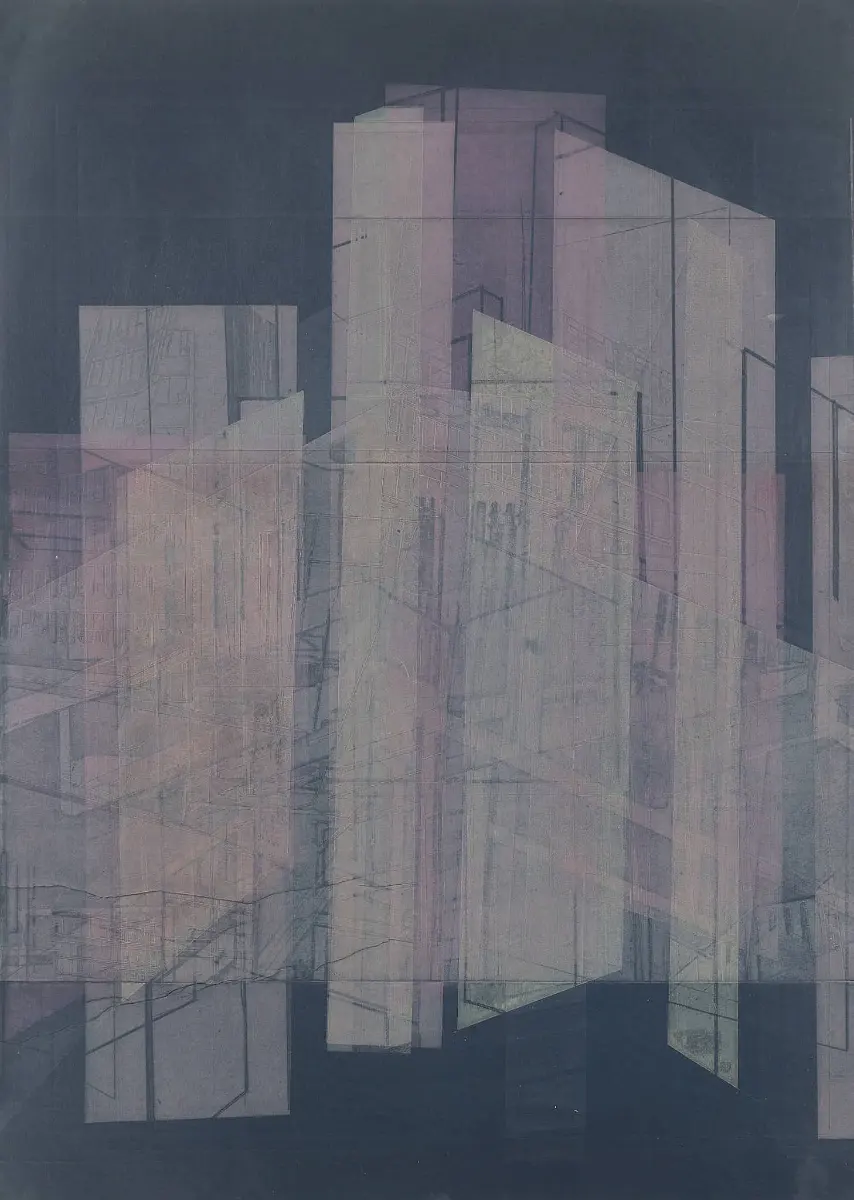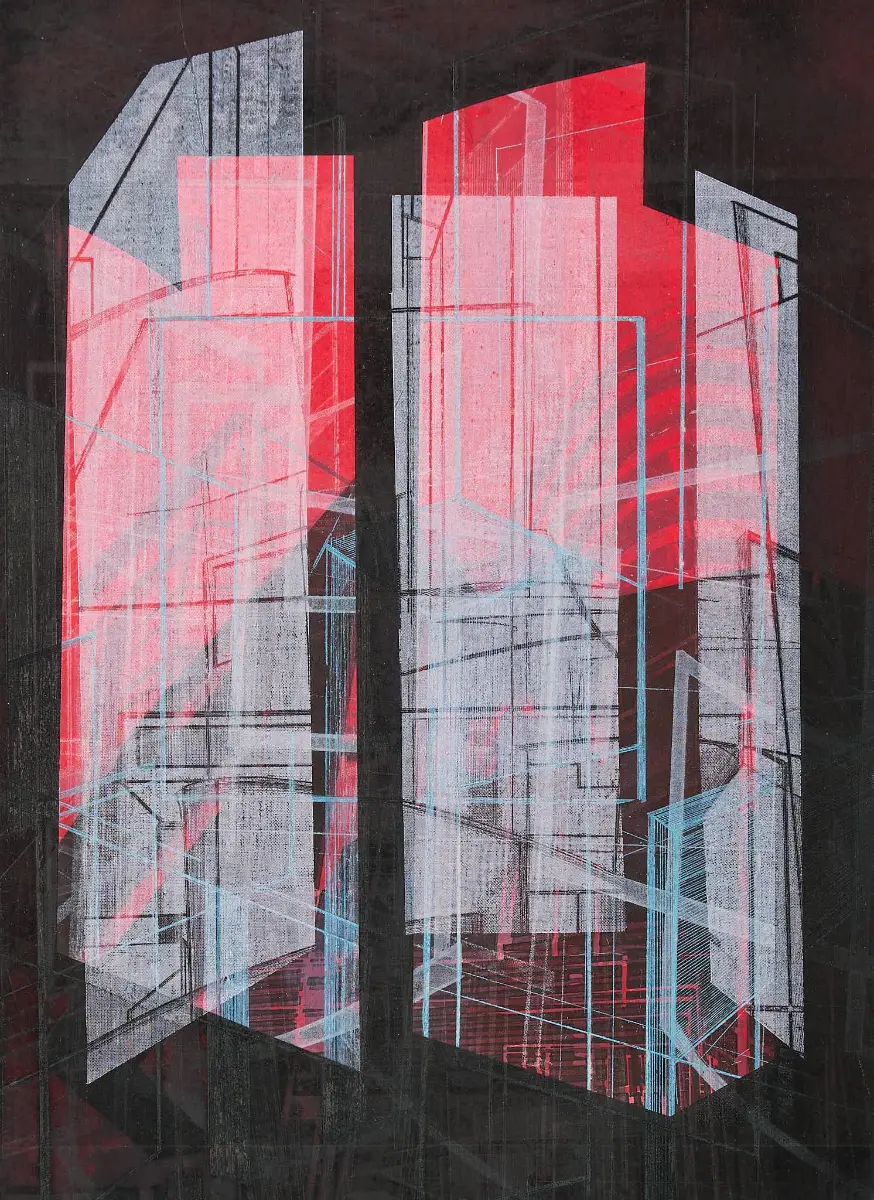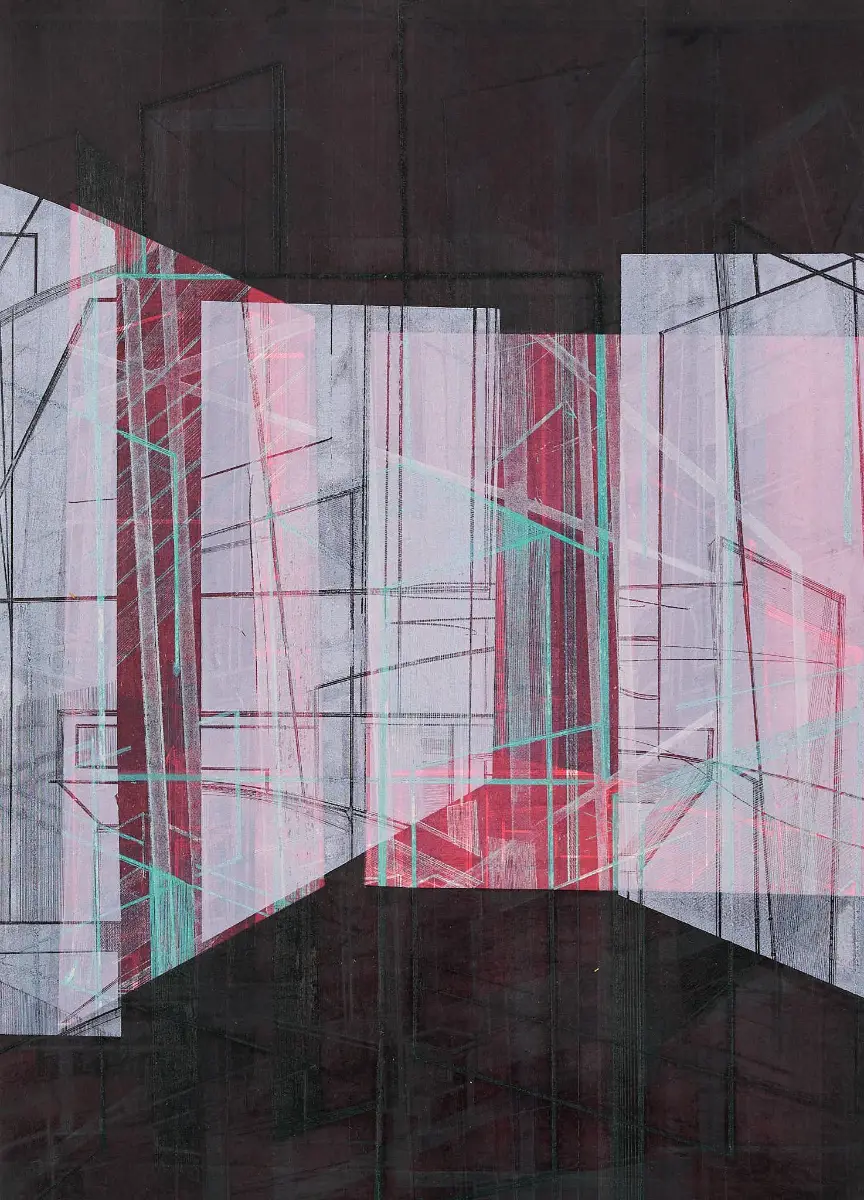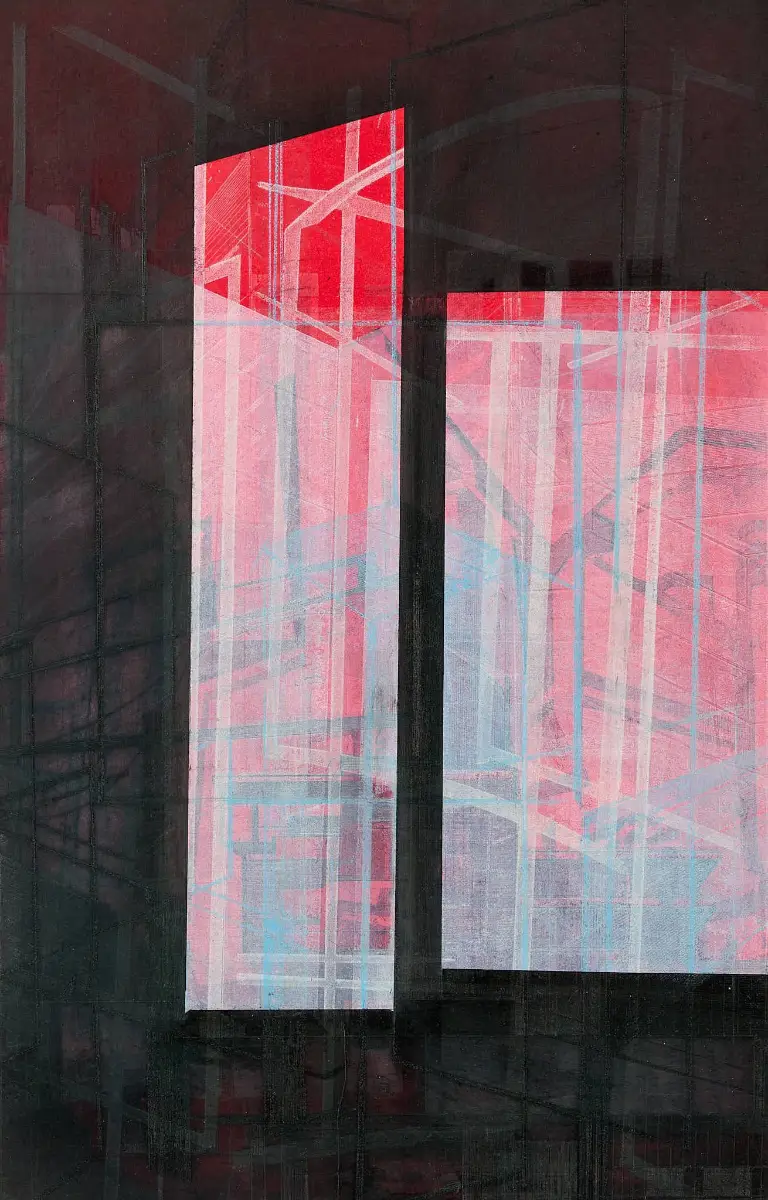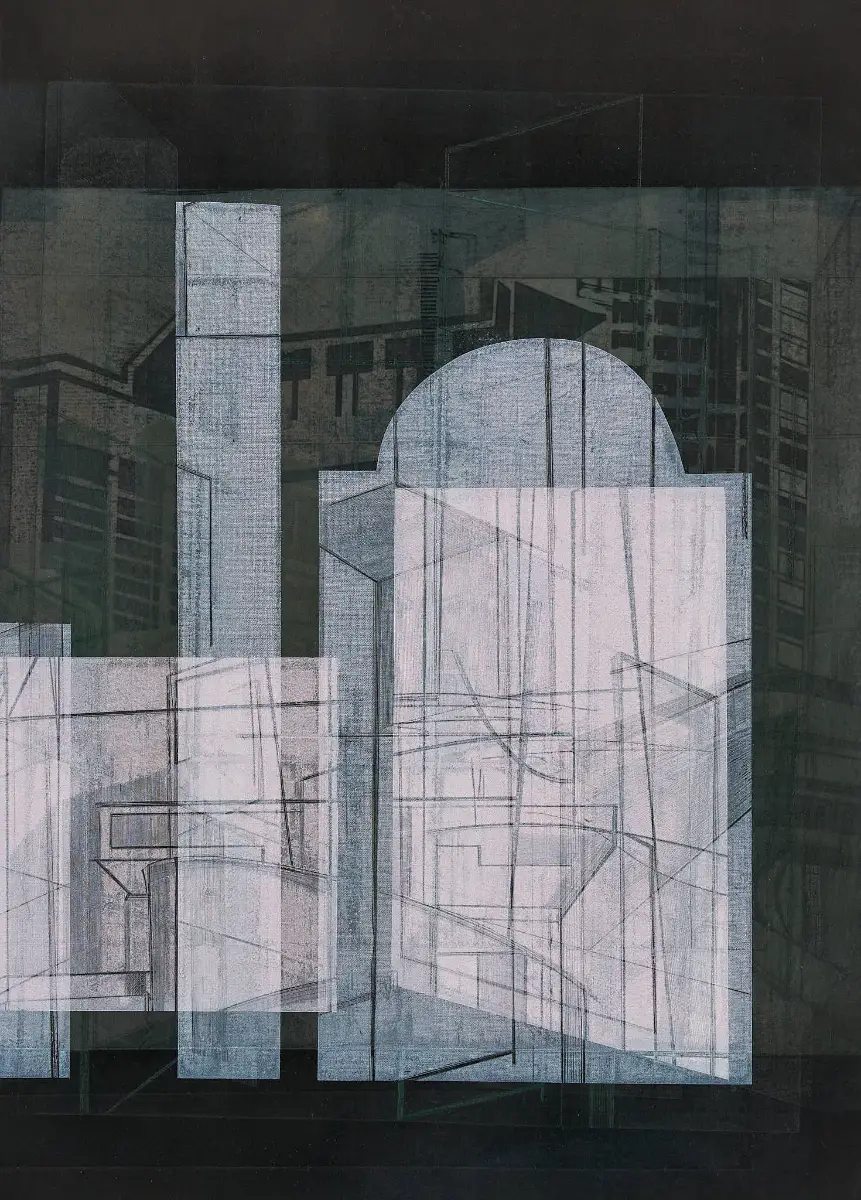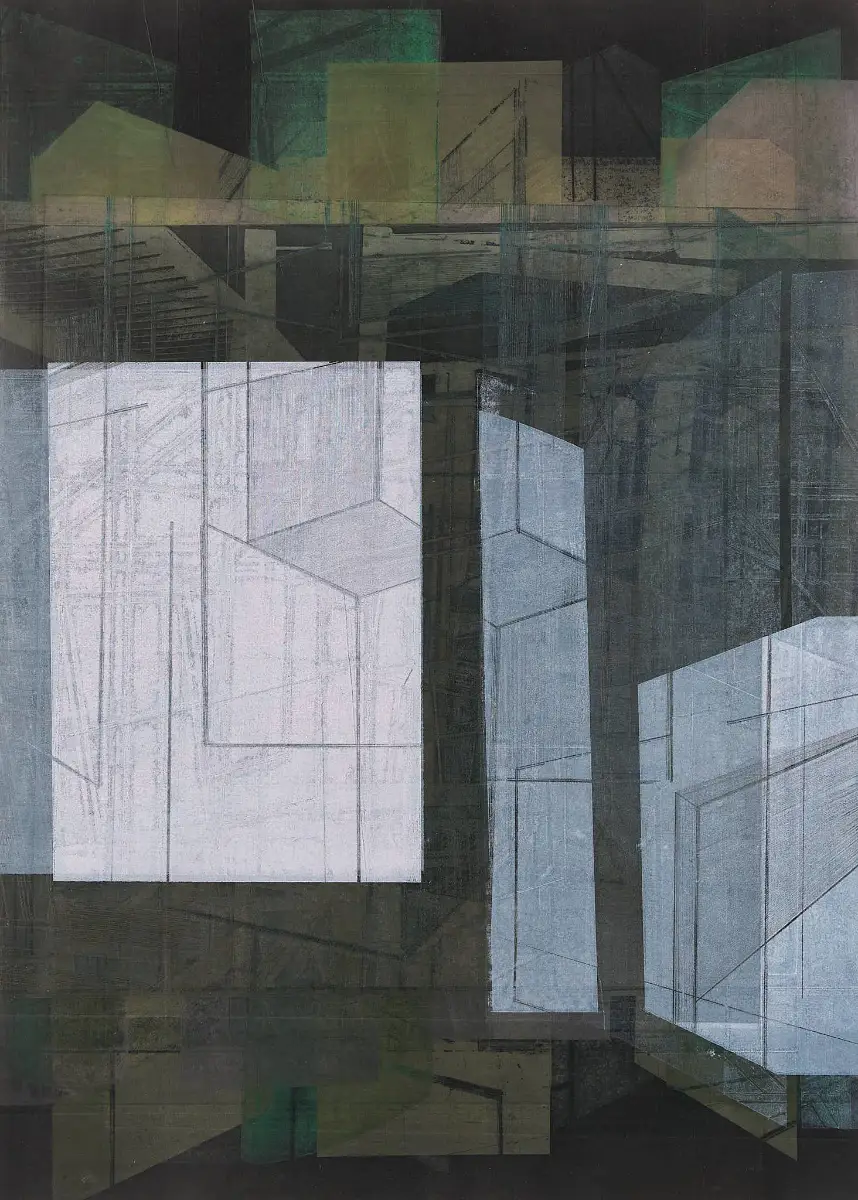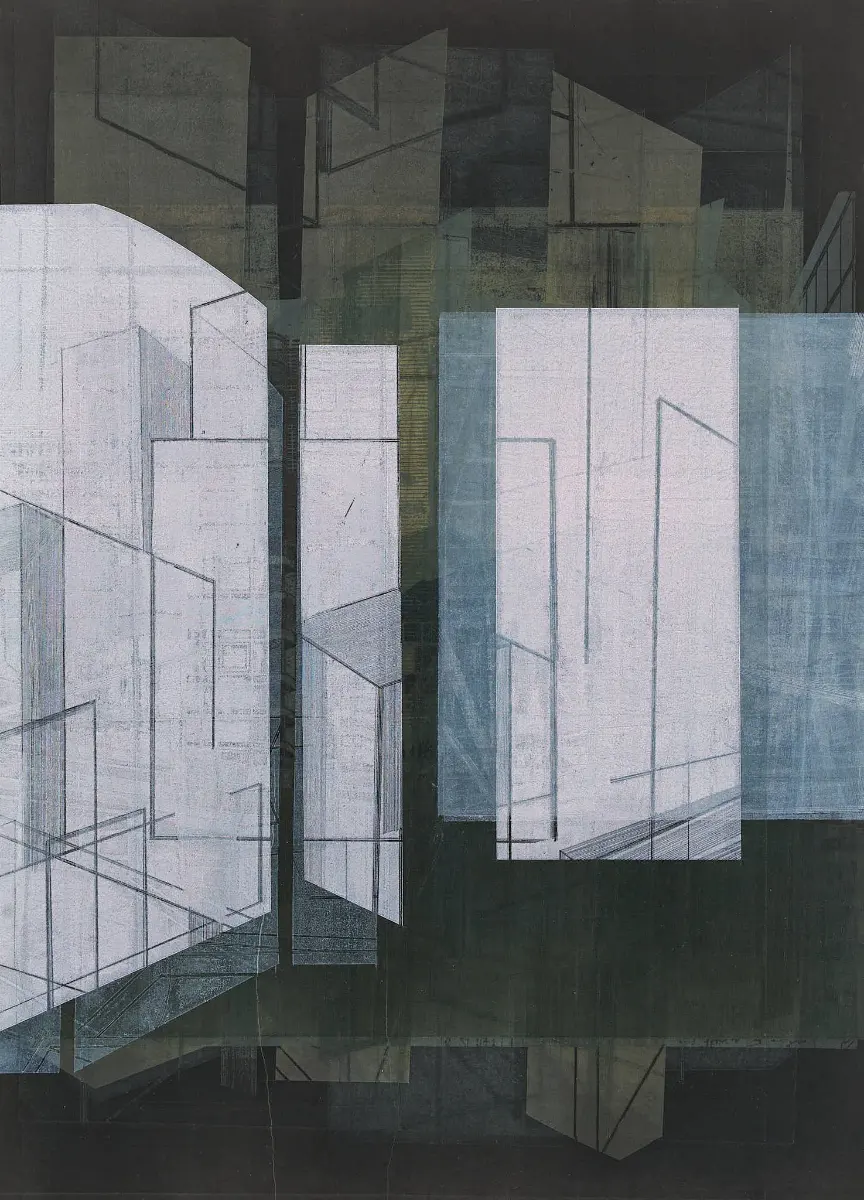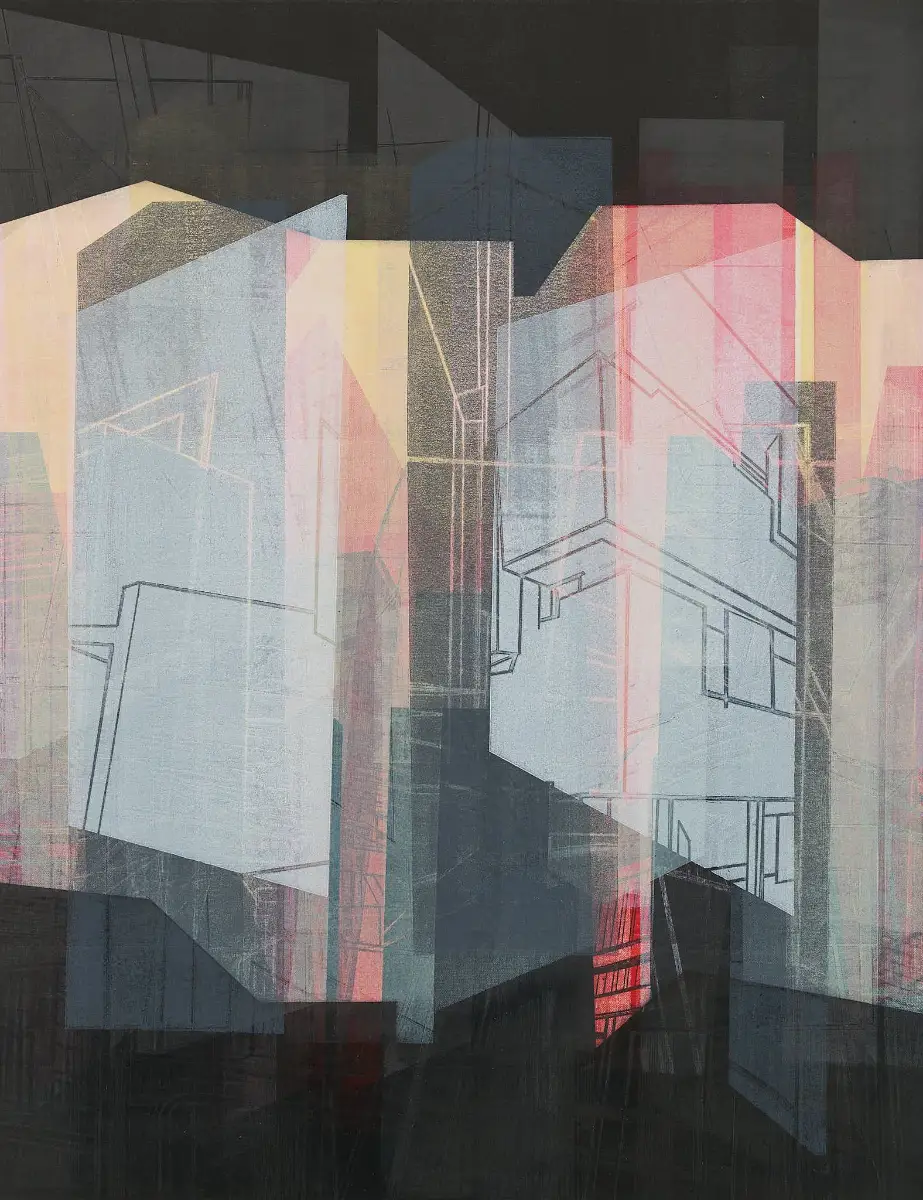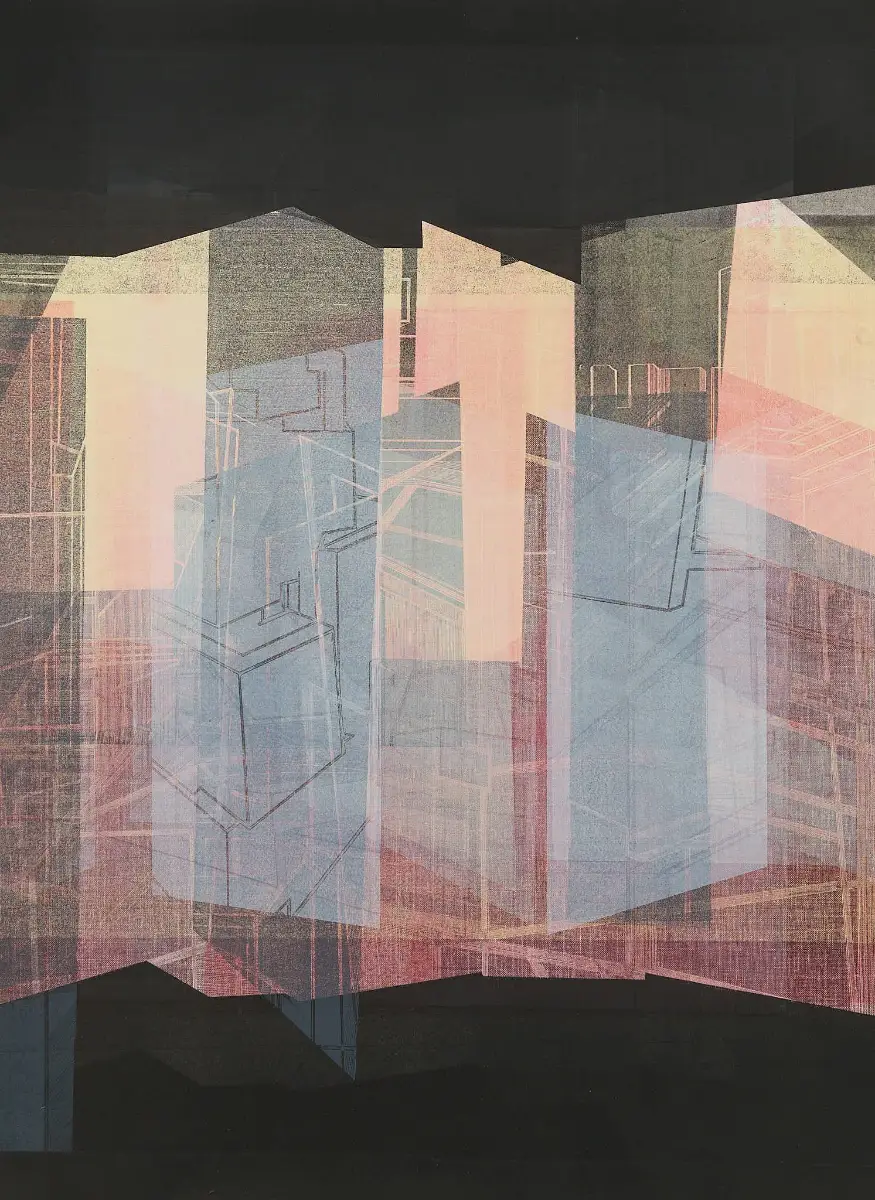Hidden Spaces 2023
Surfaces are layered and surrounded by transparent curtain veils exposing spaces beneath where the canvas and paper have been passed through the press several times using traditional printmaking processes from copper plates. Painted surfaces connect the translucent shadows that reveal the threshold between the buildings while the street is blurred as new structural designs peel away the bulky façade for an updated transparent scheme, an expression of the building’s internal vitality.
I have traced the Hidden Spaces in Melbourne’s CBD by testing ways in which AI can lead me to places that are not seen directly by the human eye.
The result of such a request has directed me to dead end streets, corners and dents in the city’s new urban development. These forgotten spaces that are out of bounds and unreachable form the synopsis for this body of work.
I find these hidden spaces fascinating purely because they are considered as ‘disregarded’ and not to be seen; it is this space beneath
that I am invested in rather than the façade of a promising new lifestyle. We are at times led astray by urban development and the idea of sustainable living in high density cities that seem to be splitting at the seam to fit everyone in.
Spaces are tighter and constricted, compact and elongated, and as I track my own movement in-and-out of the city, I create new connections with my encounters. Light plays across the reflective glazed surface, responding to and amplifying changing lighting conditions, shifting and bending in shape as I walk.
Each new apartment building is designed to feel like an independent unit that gives residents a feeling of autonomy - yet the block connects visually and functionally to form a cohesive whole, although stacked between concrete walls, scaffolded, intersected and reflective.
